It is probably fair to say that Sheffield United’s defenders will be of keener interest to Fantasy managers in 2019/20 than their players further forward.
The Blades came up from the Championship with the joint-best defensive record in the second tier and several of Chris Wilder’s backline have the license to get forward in his 3-4-1-2 system.
There are a number of names to discuss in United’s midfield and attack, however, including 23-goal striker Billy Sharp and arch-creator Oliver Norwood.
READ MORE: Our guide to Norwich City’s goalkeeper and defenders
READ MORE: Our guide to Norwich City’s midfielders and forwards
What is Sheffield United’s goal-scoring potential?
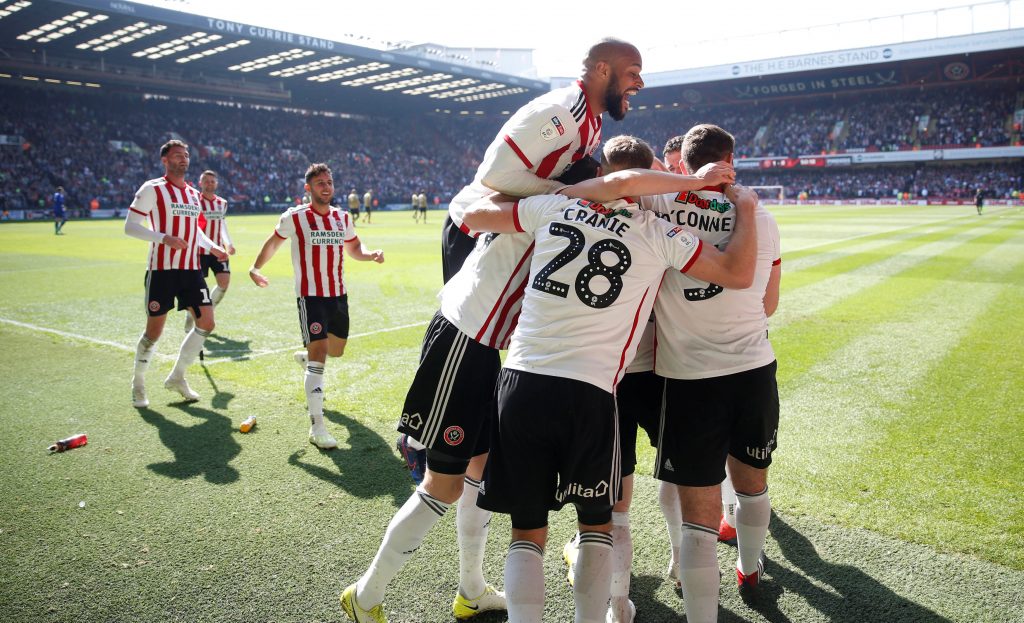
Wilder’s side were the fourth-highest scorers in the division with 78 goals, with only Norwich, West Bromwich Albion and Aston Villa hitting the back of the net with more regularity.
A total of 42 goals scored at Bramall Lane was matched by tenth-place Swansea City and bettered by four other Championship clubs, while the 37 goals that the Blades racked up on the road was a tally second only to Norwich.
Forty-two of United’s goals (53.8%) came in the second half of the season, with the Blades only failing to score in two of their final 23 fixtures.
Wilder’s troops were no flat-track bullies, either, as they scored against all five of the other teams in the automatic promotion or play-off spots, racking up 18 goals in ten meetings with these clubs.
The overall shot count doesn’t seem like good reading: United ranked joint-14th for attempts on goal (579) in the Championship last season.
The quality of the Blades’ chances, rather than the quantity, was significant, though: no club registered as many shots (80) or goals (25) from inside the six-yard box.
Wilder’s side ranked 12th for attempts from set plays (172) and sixth for goals from dead-ball situations (18).
Player-by-Player
Billy Sharp
Centre-forward
Starts: 34 | Substitute appearances: 6 | Goals: 23 | Assists: 4

Fantasy managers love a budget striker and, before the start of every season, there is always a whiff of optimism that a prolific second-tier attacker can make the step up to the Premier League and provide us with a cut-price option up front.
Aleksandar Mitrovic (who admittedly had a steeper price tag) certainly delivered on that front in the first two months of 2018/19 before the goals dried up, while FPL midfielder Diogo Jota, who had plundered 17 goals in Wolves’ promotion-winning campaign, was a revelation from Gameweek 15 onwards.
Teemu Pukki is arguably the main hope for 2019/20 but Sharp’s 23 goals for Sheffield United last season won’t have gone unnoticed by Fantasy managers.
The 33-year-old striker had his best-ever Championship season in terms of goals scored and enjoyed a blistering first six months of 2018/19, with 24 of his 27 attacking returns arriving before the second-tier equivalent of Gameweek 32 in mid-February.
Just one goal and two assists followed in the final three months of the campaign but his earlier efforts were enough for him to be named in the PFA Championship Team of the Season.
When asked about United’s attacking prospects next season, BladesPod’s Ben Meakin told us:
I don’t expect United to run riot in the Premier League as Wolves have done – we have nowhere near that level of investment – but I do think we’ll play in a front-foot way and score goals.
Our style is all about creating high-quality chances rather than peppering the opposition, and that’s where Billy Sharp comes in.
He’s 33 now but coming off arguably the best season of his career with 23 league goals.
His game has never been about pace or strength: he’s just a master of finding space in the box, and our system puts them on a plate for him. If you watch a montage of his goals from this season, they’re all from in or around the six-yard box.
I wouldn’t be shocked at all if he has a similar time to Glenn Murray at Brighton and gets eight-to-ten goals.
Even though Sharp stands at only 5’9″ tall, there are similarities with Murray.
The Sheffield United striker will turn 34 midway through next season and can look to the veteran Brighton forward for inspiration, with Murray having scored 13 top-flight goals at the age of 35 in 2018/19.
Murray was one of the five most-fouled FPL strikers of last season and Sharp, while smaller in stature, is also adept at making a nuisance of himself up front and winning free-kicks.
Amazingly, no Championship player scored more headed goals than Sharp last season (nine).
Perhaps the most striking comparison is the two seasoned strikers’ goal conversion rates.
Murray has made a habit out of finding the back of the net from few opportunities, with his goal conversion rate of 24.1% the best among first-choice Premier League strikers in 2018/19.
Sharp is similarly clinical.
The United forward had only 75 shots last season (43 fewer than McGoldrick and 69 fewer than Pukki) and his rate of chances (one every 40.3 minutes) is fairly off-putting, especially as that would surely deteriorate against tougher opposition next season.
What we really want from our budget Fantasy strikers, however, is the ability to turn what few chances they are presented with into goals and Sharp’s goal conversion rate of 30.7% in 2018/19 (the best in the league) certainly ticks that box.
Forty-six other Championship players had more attempts on goal than Sharp last season but only three – Pukki, Tammy Abraham and Neal Maupay – scored more.
The quality of Sharp’s opportunities stood out: the veteran striker had 30 big chances, with 20 of his shots and 13 of his goals coming from inside the six-yard box.
Sharp looked fitter than ever last season but his age may ultimately count against him as a Fantasy asset.
There were signs towards the end of the season that he was perhaps just a little fatigued (one goal in his last 11 appearances) and Wilder handled him carefully during congested periods: Sharp being benched in midweek games in September, October and November, as well as on a handful of occasions after reinforcements Gary Madine and Scott Hogan arrived.
Sharp did start every fixture between Gameweeks 23 and 31 (the hectic Christmas period falling within this range) and scored 11 goals in those nine matches but a lack of credible back-up options pre-January was a contributing factor.
Murray dropped to the bench to make way for Florin Andone on several occasions last season and it could be that Sharp is part of a similar jobshare for the Blades in the top flight – something that Fantasy managers could do without given that rotation is enough of a problem with the “big six”.
David McGoldrick
Centre-forward
Starts: 36 | Substitute appearances: 9 | Goals: 15 | Assists: 4
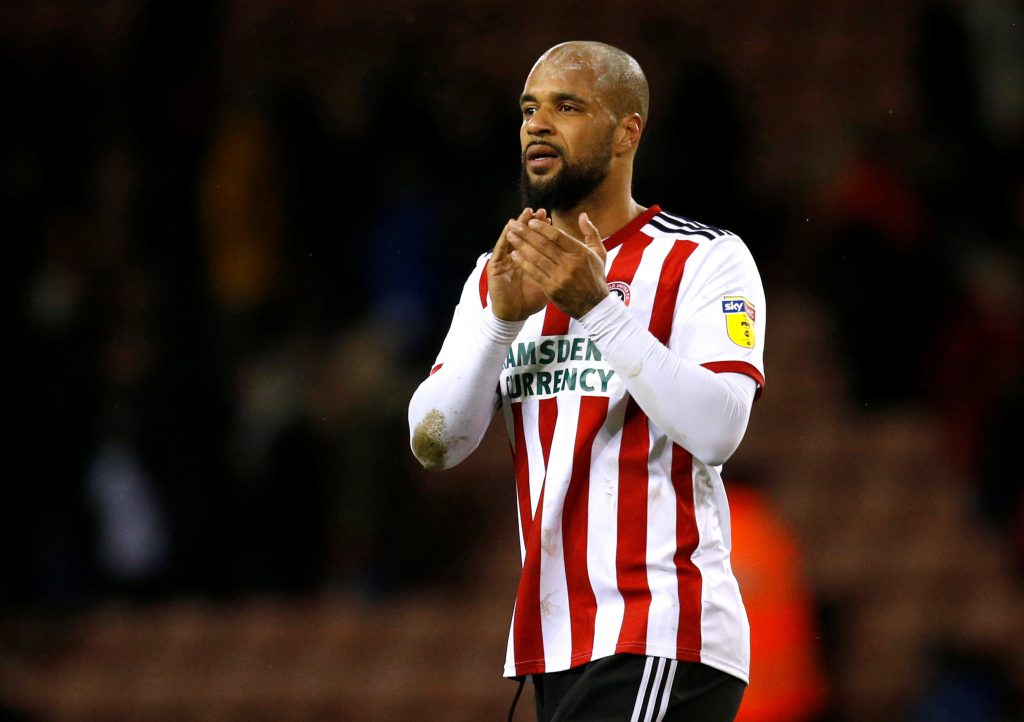
Likely to be cheaper than Sharp in FPL next season (£5.0m/£5.5m would seem about right), McGoldrick comes into 2019/20 off the back of his best-ever season in the second tier of English football.
Ahead of his free transfer capture by Sheffield United in July 2018, there were many who would understandably have thought the Ireland international was a spent force.
Injuries had blighted his time at Ipswich Town and McGoldrick hadn’t reached double figures for league goals since 2013/14.
Signing on a free following his departure from Portman Road, McGoldrick went on to play in all but one of United’s 46 Championship fixtures and scored more goals (15) than he has ever managed in a single season in the second tier.
Only four Championship players registered more shots than McGoldrick last season, with the table below showing that his rate of attempts on goal and efforts in the box was the best of the four United strikers featured in this article.
| Player | Mins per shot | Mins per shot in box | Mins per shot on target | Mins per chance created |
| Sharp | 40.3 | 42.6 | 86.4 | 88.9 |
| McGoldrick | 27.6 | 37.0 | 72.4 | 130.3 |
| Hogan | 43.4 | 43.4 | 86.8 | 434 |
| Madine | 29.6 | 38.4 | 65.2 | 108.7 |
Technically gifted and strong, McGoldrick’s intelligent link-up play was as important as Sharp’s goal-poaching up front but those attributes may also be to the detriment of him as a Fantasy asset.
While Sharp’s remit was to sniff around the six-yard box, McGoldrick would frequently drop wide and deep to orchestrate United’s attacks and 30 of his shots (compared to four from Sharp) came from outside the opposition area.
That said, McGoldrick still managed 16 efforts from inside the six-yard box and 25 big chances across the season.
McGoldrick had a lot more efforts on goal than Sharp in 2018/19 but his shot accuracy (38.1% v 46.7%) and goal conversion rate (12.7% v 30.7%) were significantly inferior to his veteran strike partner.
As we enter the era of VAR, one advantage that McGoldrick has over Sharp is that he is United’s first-choice penalty-taker.
The former Ipswich striker scored from the spot on three occasions in 2018/19, also missing from 12 yards in the Sheffield derby in November.
Sharp and Oliver Norwood also scored one penalty each last season but McGoldrick wasn’t on the pitch on either occasion.
Sharp had missed from the spot against Millwall in September, with McGoldrick scoring from 12 yards later in the same game.
Starting all but one match between Gameweeks 9 and 28, McGoldrick was one of the first names on the teamsheet for much of the season although did face bench duty on five occasions after Madine and Hogan’s arrivals in January.
His ability to play as a second striker/attacking midfielder is a boon for his first-team chances in the Premier League, at least.
Gary Madine
Centre-forward
Starts: 6 | Substitute appearances: 10 | Goals: 3 | Assists: 2
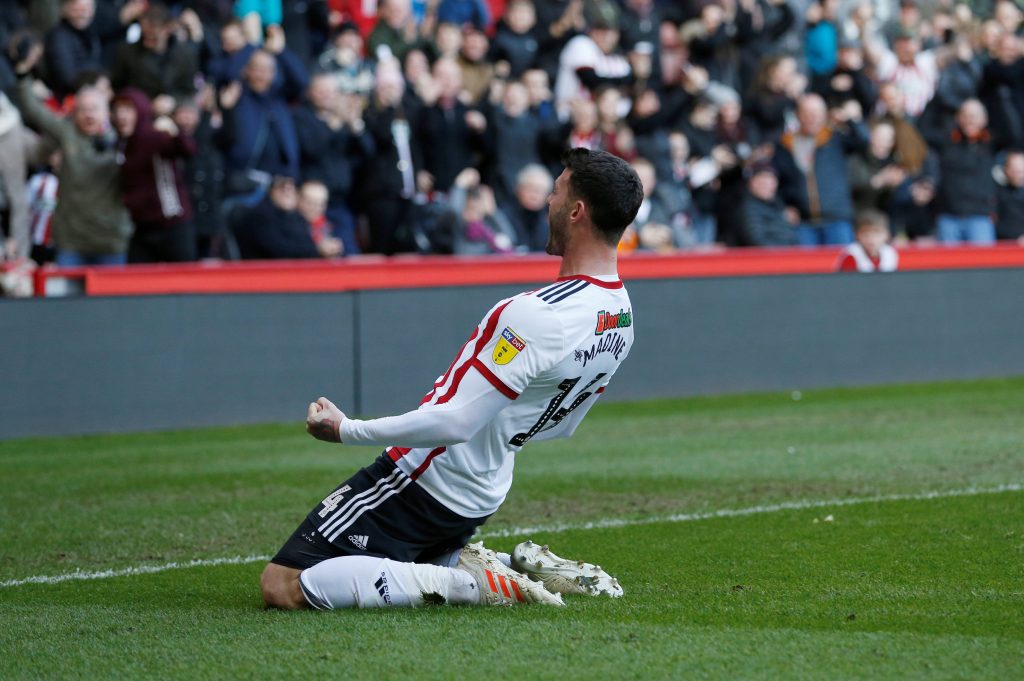
Fantasy managers have already had a glimpse of Madine in 2018/19, albeit a fleeting one.
The towering 28-year-old striker made five substitute appearances for Cardiff City in the opening 11 Gameweeks of the season but his pitch-time amounted to 32 minutes and he unsurprisingly didn’t manage an attacking return in that time.
With first-team opportunities limited, Madine joined Sheffield United on loan in January of this year and played a part in 16 of the 17 fixtures he was eligible for – a three-match ban depriving the Blades of his services in March and April.
It remains to be seen if Wilder will go back to South Wales to make Madine’s signature permanent but the player himself is keen on a return.
The on-loan striker said towards the end of 2018/19:
This feels like home to me now, I’d be devastated if I had to move on from here at the end of the season, I’d love to stay for as long as the manager wants me to and hopefully that’s beyond the summer.
I knew I’d enjoy it here, that’s why I jumped at the chance to come, but I wasn’t thinking about the future, I just wanted to come and play games, score goals and win promotion again.
These lads are a special bunch, working daily with this manager and his staff is something I’ve relished. I don’t want to be disrespectful to Cardiff City, but it’s a long way from home and it’s never really happened for me there. I’m settled here, I’m content and happy, I’ve proved I play my best football when I’m happy and I couldn’t be happier than I am at Sheffield United.
With thirtysomethings Sharp and McGoldrick the only first-team strike options on the books at the time of writing, reinforcements up front are needed over the summer and a cut-price deal for the Cardiff forward could be a place to start.
Tall but far from immobile, Madine offers a different option up front and he initially seemed to gel with Sharp upon his move to Yorkshire in January.
The Gateshead-born targetman had the best minutes-per-shot-on-target average of any of United’s strikers.
Goals aren’t really his selling point, though, and his best single-season return over the last eight years came in 2017/18 – Madine finding the back of the net on ten occasions for Bolton Wanderers in the Championship before his move to Cardiff.
He may be a physical asset for United should he get his wish of a permanent move but from a Fantasy perspective, another £4.5m starting price and “bench fodder” status beckons for Madine if he returns to the top flight in 2019/20.
Scott Hogan
Centre-forward
Starts: 5 | Substitute appearances: 3 | Goals: 2 | Assists: 1
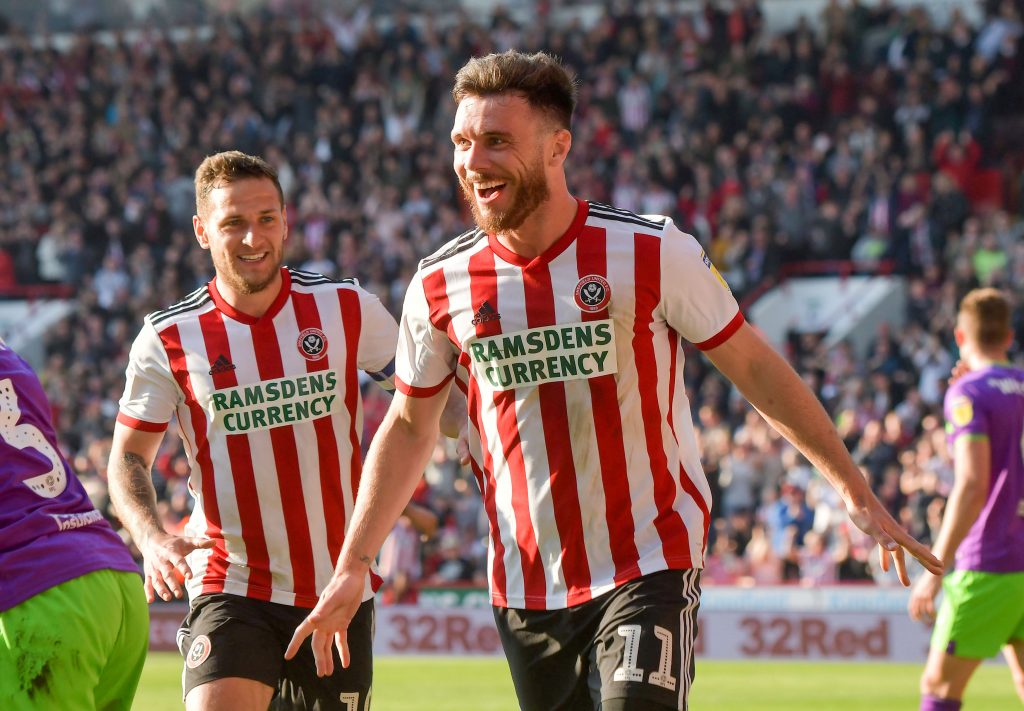
Signed from Aston Villa on loan on the final day of the January transfer window, Hogan was essentially relief for veteran Sharp in the second half of the season.
Hogan and Sharp never started a match alongside one another and were only on the pitch together for 45 minutes against Bristol City, when McGoldrick dropped back into the number ten role.
Hogan’s energy and movement were beneficial in the run-in, as Sharp’s form and goals slightly tailed off, although the loanee himself only scored on two occasions and there are big question marks over whether he could prosper at a higher level.
Hogan’s minutes per goal attempt (43.4), shot in the box (43.4), effort on target (86.8) and key pass (434) averages were the worst of all four strikers featured in this article.
If his move is made permanent over the summer, as has been touted in some newspaper articles, then he will likely be an impact player rather than a regular starter and it would take something out of the ordinary in pre-season for Hogan to enter our Fantasy radar.
Mark Duffy
Attacking midfielder
Starts: 32 | Substitute appearances: 4 | Goals: 6 | Assists: 6
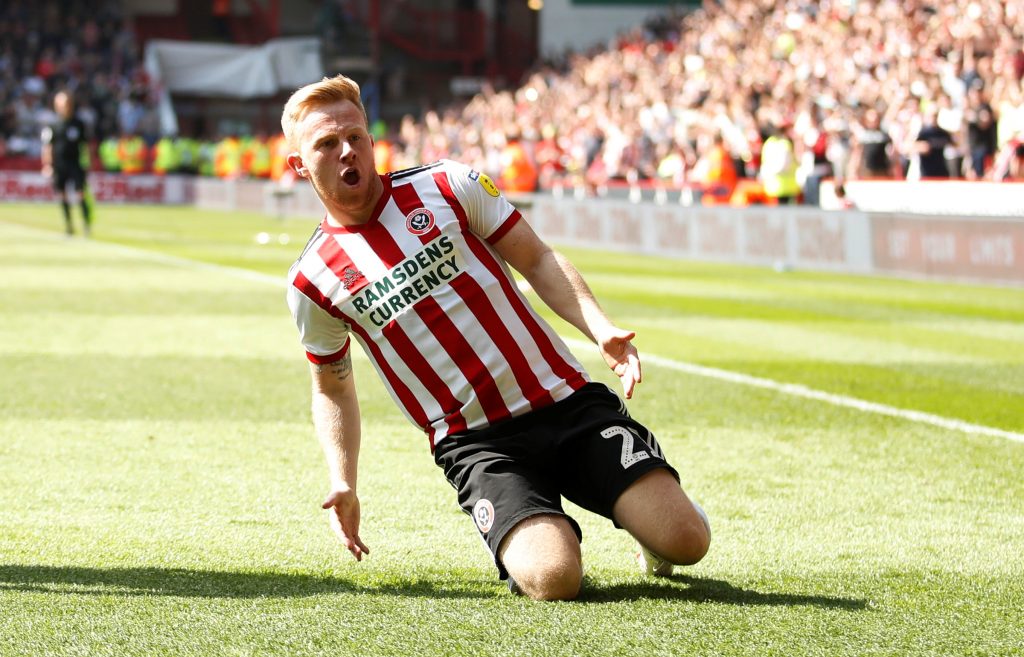
The most advanced of Sheffield United’s central midfield three, Duffy chipped in with 12 attacking returns in 2018/19 and doubled his number of career Championship goals in the Blades’ promotion-winning season.
Duffy’s excellent curler against Forest was arguably the pick of his efforts.
The technically gifted midfielder’s overall goal threat is a concern from a Fantasy perspective, however.
McGoldrick and Sharp recorded a combined 55 big chances and 36 shots from inside the six-yard box last season but Duffy registered only two of each.
Given that he is a “number ten”, a shot on goal every 66.2 minutes would be poor even by Premier League standards let alone the Championship.
Then there is the age issue.
Duffy turns 34 in October and there will be legitimate concerns over his ability to string together a series of starts in the top flight.
There may be parallels with Wes Hoolahan’s campaign in 2015/16, with the veteran Norwich number ten having his minutes managed throughout that campaign.
That said, these worries over Duffy have existed for a while now and the Liverpudlian schemer has repeatedly seen off the challenge of positional rivals at Bramall Lane.
Kieran Dowell was brought in on loan in January and ate into Duffy’s minutes in the subsequent months but the 33-year-old attacking midfielder was brought back into the starting XI for the final seven matches of 2018/19 and United have generally looked much better with him in the side.
From a Fantasy point of view, though, the cons would appear to outweigh the pros even if he turns out to be generously priced in FPL.
Kieran Dowell
Attacking midfielder
Starts: 8 | Substitute appearances: 8 | Goals: 2 | Assists: 0
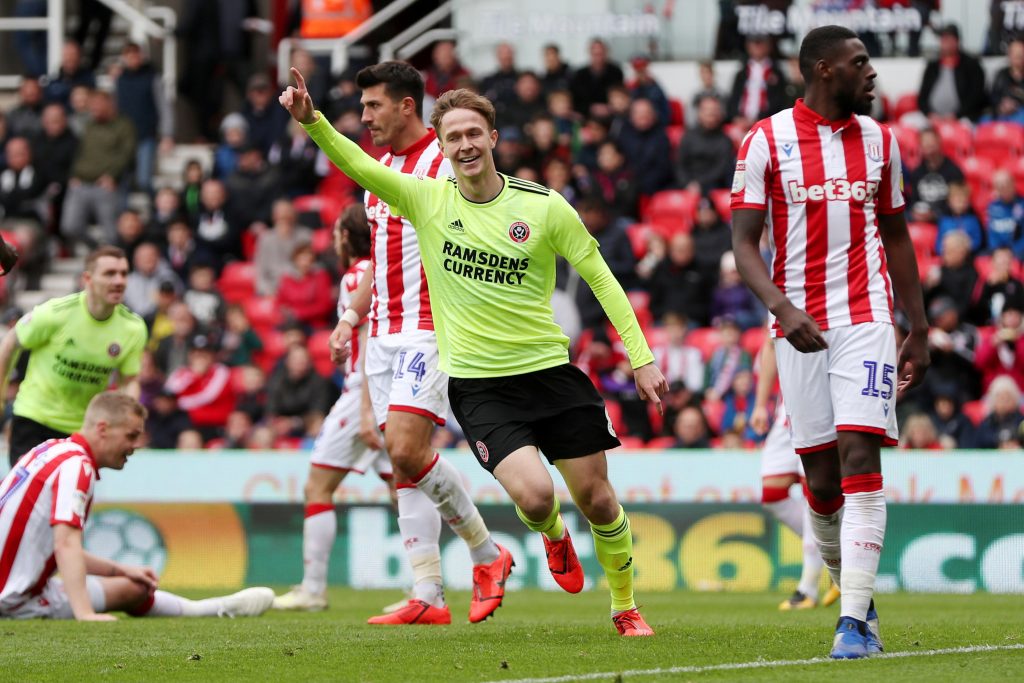
Another loan capture in January who the Blades are reportedly interested in recruiting again this summer, Dowell provided Wilder with the opportunity to hand Duffy a breather in the second half of the season.
His performances during the United promotion push were solid if not spectacular and there was little to excite Fantasy managers should Dowell return to South Yorkshire ahead of 2019/20.
While Dowell edged Duffy for minutes per goal attempt (60.5 v 66.2), his experienced teammate had better rates of shots in the box (116.6 v 133.2) and efforts on target (128.9 v 133.2).
Of the midfielders and forwards featured in this piece, Dowell had the worst rate of key passes (one every 133.2 minutes).
The on-loan Everton midfielder didn’t register a single assist, although did chip in with two goals.
John Fleck
Central midfielder
Starts: 45 | Goals: 2 | Assists: 10
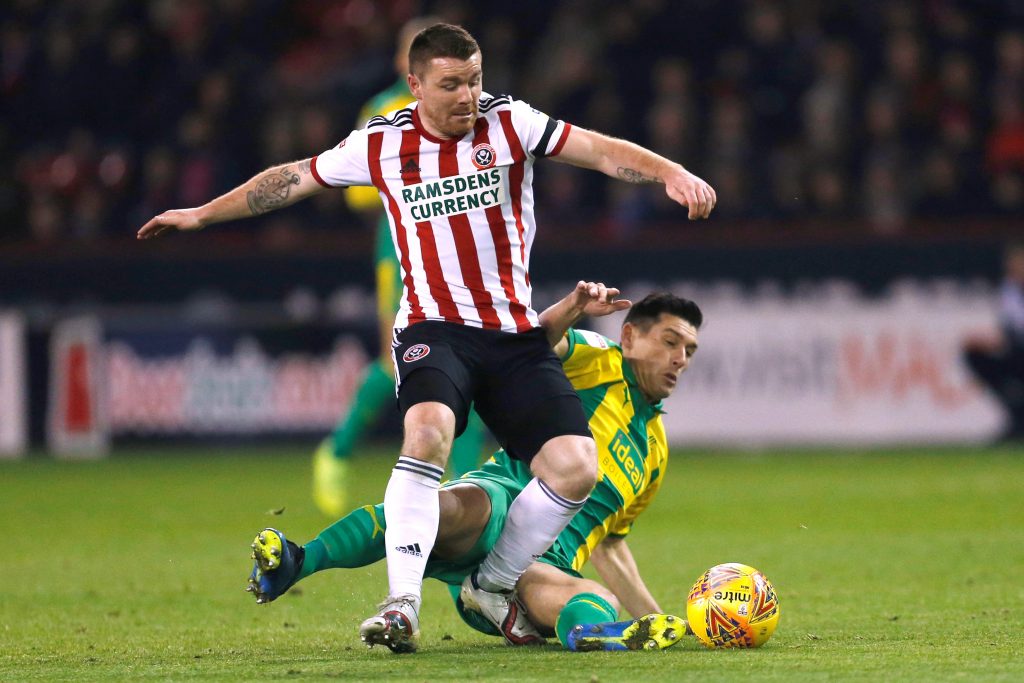
The Scotland international could be a decent bench fodder option if generously priced up at £4.5m by FPL this summer – although Fleck’s ten assists last season will likely see him moved up a price bracket in 2019/20.
What the 27-year-old midfielder has on his side as an emergency third substitute in FPL, for instance, is security of starts, having played 40+ matches in each of United’s last three seasons.
Fleck only failed to start one Championship fixture last season (he was injured for the 1-0 defeat to Bristol City in September) and completed 90 minutes in 42 of his 45 appearances.
It remains to be seen who Wilder brings in over the summer, of course, but there would appear to be other areas of the team that need strengthening first, with Chris Basham able to deputise in central midfield if either Fleck or Oliver Norwood pick up an injury.
Fleck has divided opinion among the Blades’ fanbase at times, with his form sporadically dipping throughout the season.
On his day he is an effective box-to-box midfielder, capable of breaking up the play at one end and driving forward to link up with the attack at the other.
Norwood is United’s chief set-piece-taker but Fleck did take 104 corners last season and 18 of his 21 free-kick deliveries found a teammate.
Fleck was ranked joint-17th for key passes in the Championship last season and in the top ten for overall assists.
No Sheffield United player created more “big chances” (13), either.
Shooting isn’t a strength: Fleck scored on only two occasions in 45 league matches and his average of a goal attempt every 79.5 minutes was the worst of the eight midfielders or forwards profiled in this piece (see the table below).
Fleck had only one big chance all season.
| Player | Mins per shot | Mins per shot in box | Mins per shot on target | Mins per chance created |
| Fleck | 79.5 | 265 | 265 | 56.0 |
| Norwood | 66.8 | 951.8 | 346.1 | 39.2 |
| Duffy | 66.2 | 116.6 | 128.9 | 47.1 |
| Dowell | 60.5 | 133.2 | 133.2 | 133.2 |
Oliver Norwood
Central midfielder
Starts: 43 | Goals: 3 | Assists: 8
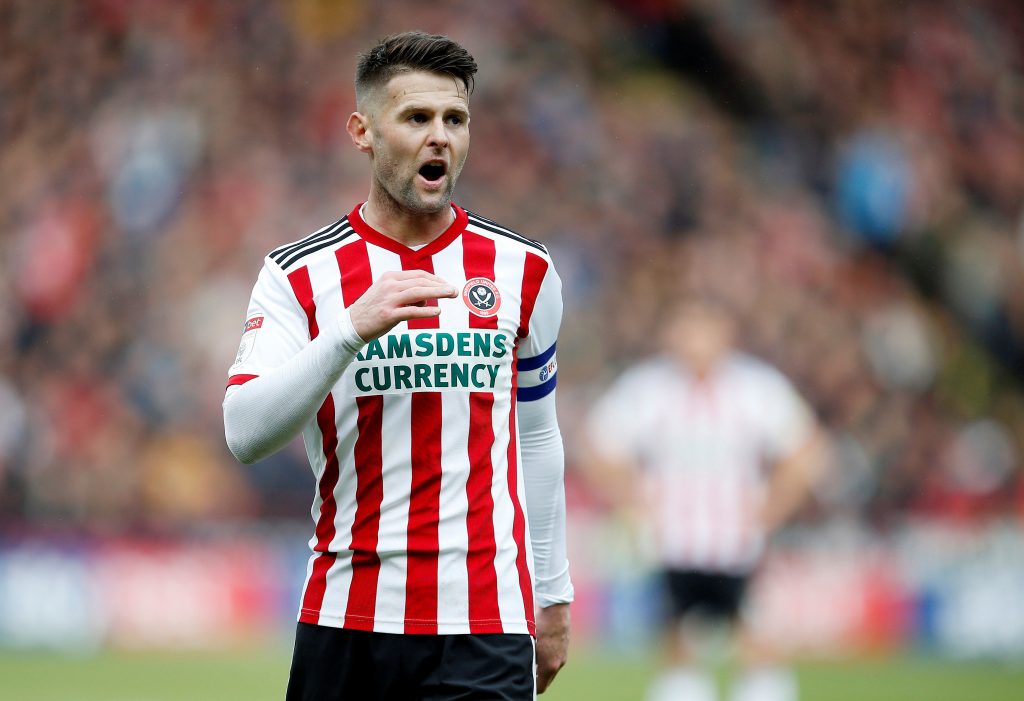
Fleck may have registered more assists than Norwood last season but the former Reading, Brighton and Fulham midfielder was the creative heart of the Blades’ midfield.
Pablo Hernandez was the only Championship player who supplied more chances than Norwood (97) in 2018/19, while just Swansea’s Matt Grimes recorded more passes.
Norwood made more successful long passes than any other outfield player in the English second tier, which perhaps gives an indication of how deep he can often be at the heart of the United midfield.
Norwood’s prominent role at dead-ball situations helps boost his assist potential, however: no Championship player took more accurate corners (92) or accurate free-kicks (123) than the Blades’ playmaker last season.
There are similarities with Joao Moutinho in that regard, with both players orchestrating play from deep for their respective sides while creating opportunities from corners and free-kicks.
Six of Norwood’s eight assists last season were from set plays.
Norwood’s rate of a key pass every 39.2 minutes was the best in the United squad and similar to Moutinho’s average (a chance created every 36 minutes), although there has to be some weighting applied given that Norwood and the Blades were encountering inferior opposition.
To continue with the Wolves midfielder parallels, Norwood’s shot statistics have a Ruben Neves feel about them.
The Sheffield United star is not shot-shy, having chanced his arm on 57 occasions last season, but only four of his efforts were from inside the box.
Norwood’s one big chance was a penalty he scored against Brentford in March but as we have discussed earlier, McGoldrick has the edge in the spot-kick pecking order.
Like Neves, goals from Norwood will likely be low in quantity but high in quality.
The United midfielder’s strike against Brentford was a screamer from distance, while his goal in the defeat of Aston Villa was one of 22 attempts he had from dead-ball situations last season.
Norwood could potentially prosper on the Bonus Points System next season.
His rate of passes, pass completion rate (82.9%) and the number of chances he creates are positives in terms of distribution but he also chips in at the other end: Norwood made more recoveries (347) than any other United outfielder last season and made 137 clearances, blocks and interceptions (CBIs).
Norwood did pick up 11 bookings last season, however, which slightly dents his appeal.
A £4.5m starting price would be enticing for those FPL managers perhaps looking at packing their defence or attack with premium assets and having a budget midfielder as a second or third substitute, though Norwood’s underlying stats and the starting prices for the likes of Stefan Johansen (£5.5m) and Joe Ralls (£5.0m) last season would suggest he will more likely be in that bracket.
Other Options
Back-up midfielder John Lundstram played just 409 minutes of Championship football in 2018/19, with five of his ten league appearances coming off the bench.
The tough-tackling midfield anchor looks unlikely to be playing a prominent role in the Premier League, having not started a single league match in 2019 and indeed having struggled to make the match-day squad in the second half of the season.
Lundstram might stay at the club as the departure of Paul Coutts has left the Blades short in the midfield department but the former England under-21 international will be of little interest to Fantasy managers regardless of his pitch-time, with attacking returns few and far between.
The much-respected Coutts was one of five players released at the end of the 2018/19 campaign.
The Scottish midfielder had been on United’s books for four and a half years but he was mostly only used a substitute last season, making just the one league start back in early November.
Strikers Conor Washington and Caolan Lavery are also looking for new clubs.
Washington made three starts and 11 substitute appearances in the Championship last season but has barely featured this calendar year, while Lavery had spent all of 2018/19 on loan at Bury.
Forwards Ched Evans and Leon Clarke remain on the books but have been transfer-listed, along with midfielders Samir Carruthers, Nathan Thomas and Ricky Holmes.
All five of those players were out on loan in the season just gone, although Clarke chipped in with three goals and as many assists before joining Wigan on a temporary deal in January.
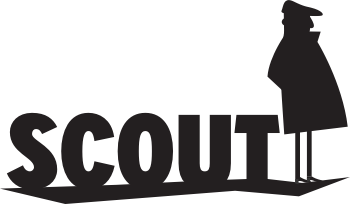


5 years, 8 months agoHopefully we will be able to get some cheap playing bench fodder from these promoted teams.